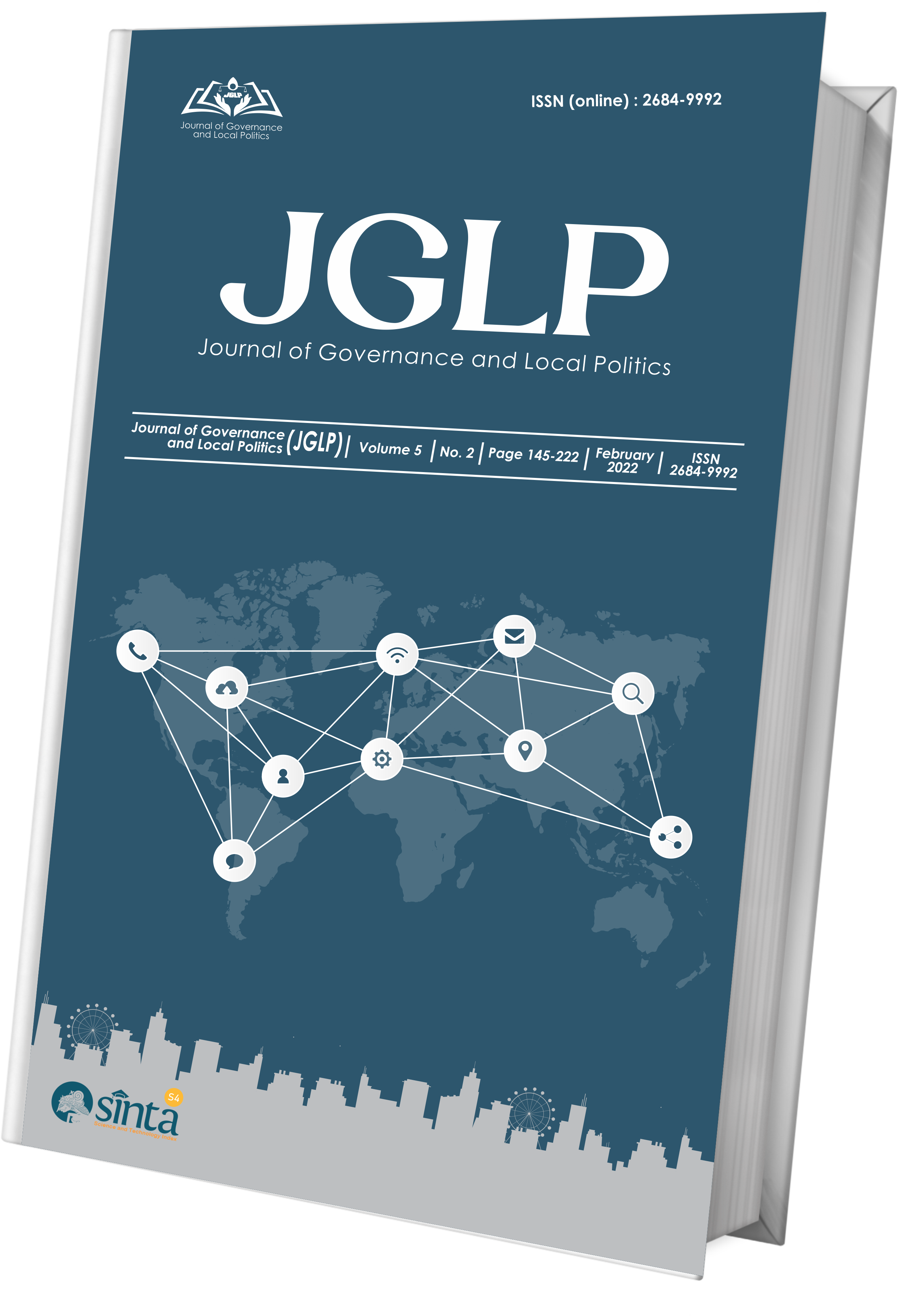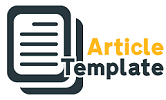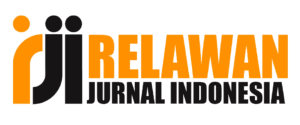Evaluation of Policies to Reduce Flooding Issues in the City of Palembang
Abstract
This article aims to evaluate the effectiveness of government policies in reducing flood risk in the city of Palembang, which is often affected by severe flooding due to low-lying geographic features and inadequate urban planning. This research uses a qualitative descriptive approach to assess the impact of current flood management strategies, focusing on structural and non-structural measures, community participation, and policy implementation. Data was collected through document analysis, interviews with key stakeholders, and direct observation in flood-prone areas. Findings show that although some structural improvements, such as improved drainage systems, have been implemented, they have not been sufficient to address recurrent flooding. Policy gaps, lack of community engagement, and poor maintenance of flood control infrastructure contribute to the city's ongoing vulnerability. This study concludes that more integrated flood management strategies, including better policy enforcement and community involvement, are needed to reduce flood risk in Palembang.
References
Adi, S. (2013). Karakterisasi bencana banjir bandang di Indonesia. Jurnal Sains Dan Teknologi Indonesia, 15(1).
Agustina, N. A., & Prasita, V. D. (2023). Rob Flood as impact of sea level rise around Kenjeran Beach Tourism Surabaya. IOP Conference Series: Earth and Environmental Science, 1273(1), 12084.
Al Amin, M. B. (2016). Analisis Genangan Banjir di Kawasan Sekitar Kolam Retensi dan Rencana Pengendaliannya, Studi Kasus: Kolam Retensi Siti Khadijah Palembang. Journal of Regional and City Planning, 27(2), 69–90.
Al Amin, M. B., Ilmiaty, R. S., & Marlina, A. (2020). Flood Hazard Mapping in Residential Area Using Hydrodynamic Model HEC-RAS 5.0. Geoplanning: Journal of Geomatics and Planning, 7(1), 25–36.
Alia, F., Rhaptyalyani, R., & Ilmiaty, R. S. (2018). Perencanaan Kolam Retensi Untuk Pengendalian Banjir di RSMH Kota Palembang. Cantilever: Jurnal Penelitian Dan Kajian Bidang Teknik Sipil, 7(1).
Andayani, R., & Marlina, A. (2021). Pengaruh Pasang Surut Terhadap Profil Muka Air Banjir Bantaran Sungai Musi Kota Palembang. Cantilever: Jurnal Penelitian Dan Kajian Bidang Teknik Sipil, 10(2), 119–126.
Atanga, R. A., & Tankpa, V. (2022). Geospatial analysis of flood emergency evacuation sites in Accra. Jàmbá-Journal of Disaster Risk Studies, 14(1), 1172.
BPS. (2023). Provinsi Sumatera Selatan Dalam Angka 2023. https://sumsel.bps.go.id/Id/Publication/2023/02/28/E89a49138ffef974b573bc4c/Provinsi-Sumatera-Selatan-Dalam-Angka-2023.Htm.%0Ahttps://sumsel.bps.go.id/id/publication/2023/02/28/e89a49138ffef974b573bc4c/provinsi-sumatera-selatan-dalam-angka-2023.htm%0A
Daksiya, V., Mandapaka, P. V, & Lo, E. Y. M. (2021). Effect of climate change and urbanisation on flood protection decision‐making. Journal of Flood Risk Management, 14(1), e12681.
Dwirahmadi, F., Rutherford, S., Phung, D., & Chu, C. (2019). Understanding the operational concept of a flood-resilient urban community in Jakarta, Indonesia, from the perspectives of disaster risk reduction, climate change adaptation, and development agencies. International Journal of Environmental Research and Public Health, 16(20), 3993.
Farhan, F. I., & Adi, A. C. (2023). Forecasting Flood Vulnerability in Pontianak using Multiple Linear Regression and Geospatial Information Systems (GIS). INNOVATICS: Innovation in Research of Informatics, 5(1).
Hanif, M., Putra, B. G., Hidayat, R. A., Ramadhan, R., Ahyuni, A., Afriyadi, A., Jaafar, W. S. W. M., Hermon, D., & Mokhtar, E. S. (2021). Impact of Coastal Flood on Building, Infrastructure, and Community Adaptation in Bukit Bestari Tanjung Pinang. Jurnal Geografi GEA, 21(2), 102–111.
Hoirisky, C., Rahmadi, R., & Harahap, T. (2018). Pengaruh Perubahan Pola Penggunaan Lahan Terhadap Banjir di DAS Buah Kota Palembang. Seminar Nasional Hari Air Sedunia, 1(1), 14–25.
Isa, M., & Mardalis, A. (2022). Flood vulnerability and economic valuation of small and medium-sized enterprise owners to enhance sustainability. Jàmbá-Journal of Disaster Risk Studies, 14(1), 1306.
Maheng, D., Bhattacharya, B., Zevenbergen, C., & Pathirana, A. (2024). Changing urban temperature and rainfall patterns in Jakarta: A comprehensive historical analysis. Sustainability, 16(1), 350.
Mardiansjah, F. H., Rahayu, P., & Rukmana, D. (2021). New patterns of urbanization in Indonesia: emergence of non-statutory towns and new extended urban regions. Environment and Urbanization ASIA, 12(1), 11–26.
Marlina, A., Andayani, R., & Umari, Z. F. (2023). ANALISIS SALURAN DRAINASE AKIBAT GENANGAN DI KECAMATAN ILIR TIMUR II KOTA PALEMBANG. Jurnal Teknik Sipil LATERAL, 1(1), 37–45.
Miles, M. B., Huberman, A. M., Rohidi, T. R., & Mulyarto. (1992). Analisis data kualitatif: buku sumber tentang metode metode baru. Penerbit Universitas Indonesia (UI-Press).
Molenveld, A., & van Buuren, A. (2019). Flood risk and resilience in the Netherlands: In search of an adaptive governance approach. Water, 11(12), 2563.
Nawir, D., & Mansur, A. Z. (2022). Effects of HDPE utilization and addition of wetfix-be to asphalt pavement in tropical climates. Civil Engineering Journal, 8(8), 1665–1678.
Novriansyah, M. F., Mukhlis, M., Budiono, P., & Makhya, S. (2021). Effectiveness Level of Regional Original Revenue, Urban Buffer, and Rural Areas. Jurnal Administrasi Publik (Public Administration Journal), 11(2), 197–205.
Riyanti, N., Jariah, A., Ariyadi, A., & Selawaty, D. (2023). Actor Relationship Model in the Development of New Housing Facilities in Palangka Raya City: Problems and Urgency of Providing Public and Social Facilities. Jurnal Administrasi Publik (Public Administration Journal), 13(2), 147–157.
Salsabila, L., Lodan, K. T., & Khairina, E. (2023). Public Engagement Impact on Sustainable Waste Management in Indonesia: Examining Public Behavior. Jurnal Administrasi Publik (Public Administration Journal) TAMPER WEPE, 13(2), 158–178.
Shatkin, G. (2019). Futures of crisis, futures of urban political theory: Flooding in Asian coastal megacities. International Journal of Urban and Regional Research, 43(2), 207–226.
Soegianto, A. (2009). Ilmu Lingkungan, Sarana Menuju Masyarakat Berkelanjutan. Surabaya: Airlangga University Press, 2010, Hlm. 1 25 25. Ghh.
Sugiyono. (2016). Metode Penelitian Kunatitatif Kualitatif dan R&D. Alfabeta, Bandung.
Suroso, H., Fitri, L. E., & Hayati, Y. S. (2020). Relationship Between Community Attitudes and Flood Mitigation in the Welang Watershed in the Karangketug Urban Village, Pasuruan City. The Malaysian Journal of Nursing (MJN), 12(2), 106–111.
World Bank. (n.d.). Augment, Connect, Target: Realizing Indonesia’s Urban Potential. https://www.worldbank.org/en/country/indonesia/publication/augment-connect-target-realizing-indonesias-urban-potential
Yang, Y., Sun, L., Li, R., Yin, J., & Yu, D. (2020). Linking a storm water management model to a novel two-dimensional model for urban pluvial flood modeling. International Journal of Disaster Risk Science, 11, 508–518.
Yusuf, M., Damiri, N., Saptawan, A., Yunardy, S., & Supli, N. A. (2023). Optimizing the Utilization of Swamp Lands for Urban Settlements in Kertapati District, Palembang. Sriwijaya Journal of Environment, 8(2), 98–103.
Copyright (c) 2025 Journal of Governance and Local Politics (JGLP)

This work is licensed under a Creative Commons Attribution-NonCommercial-NoDerivatives 4.0 International License.










